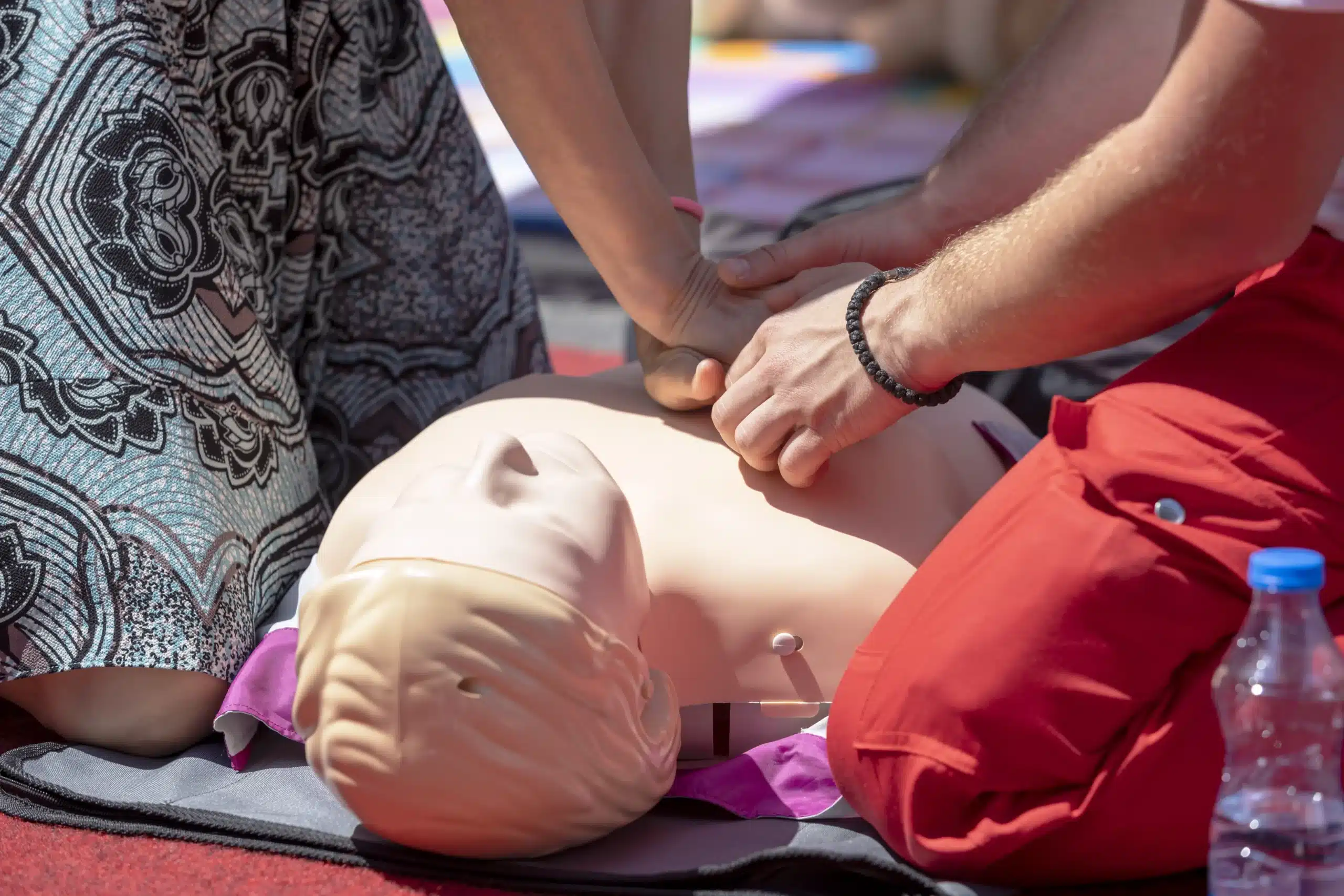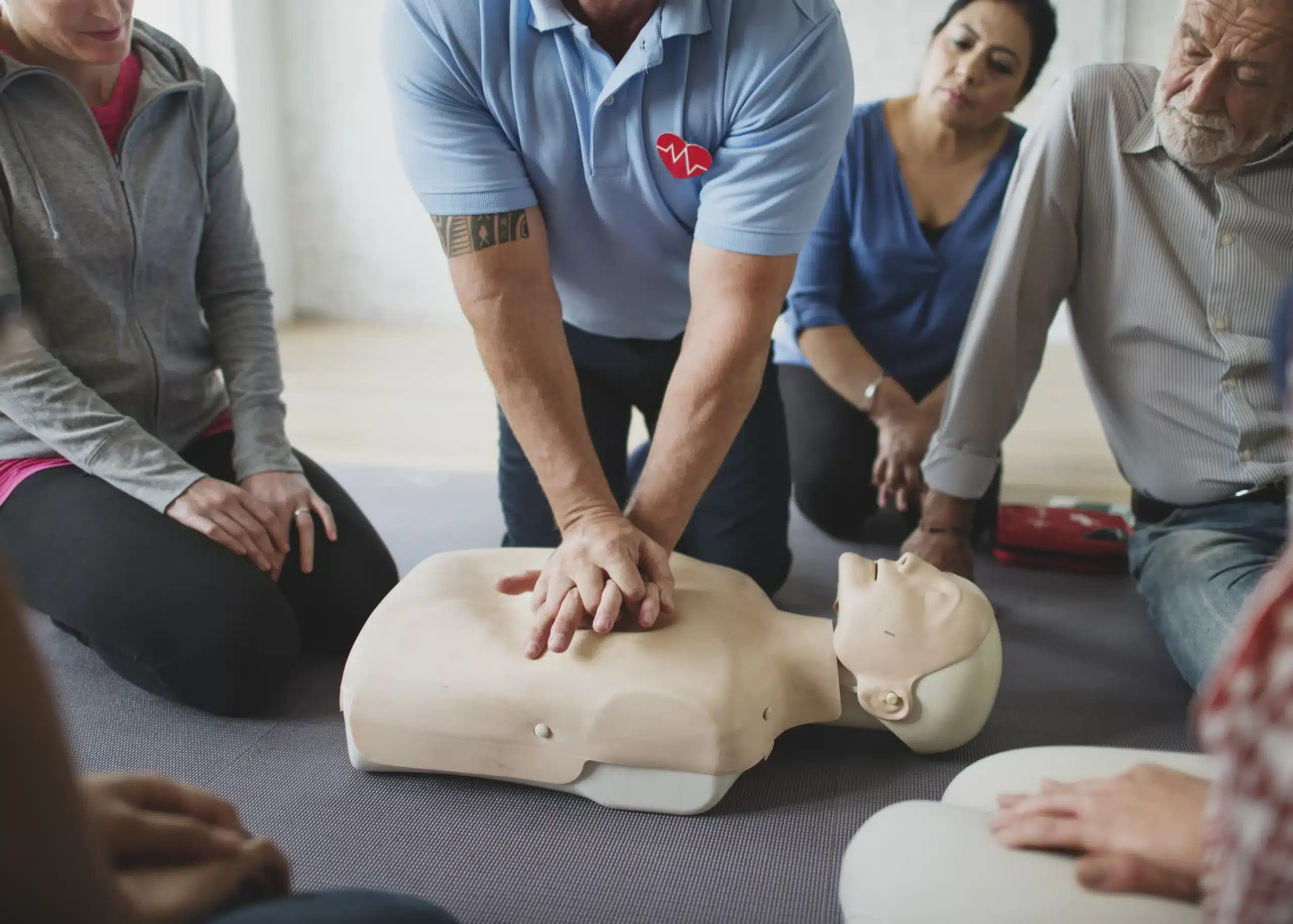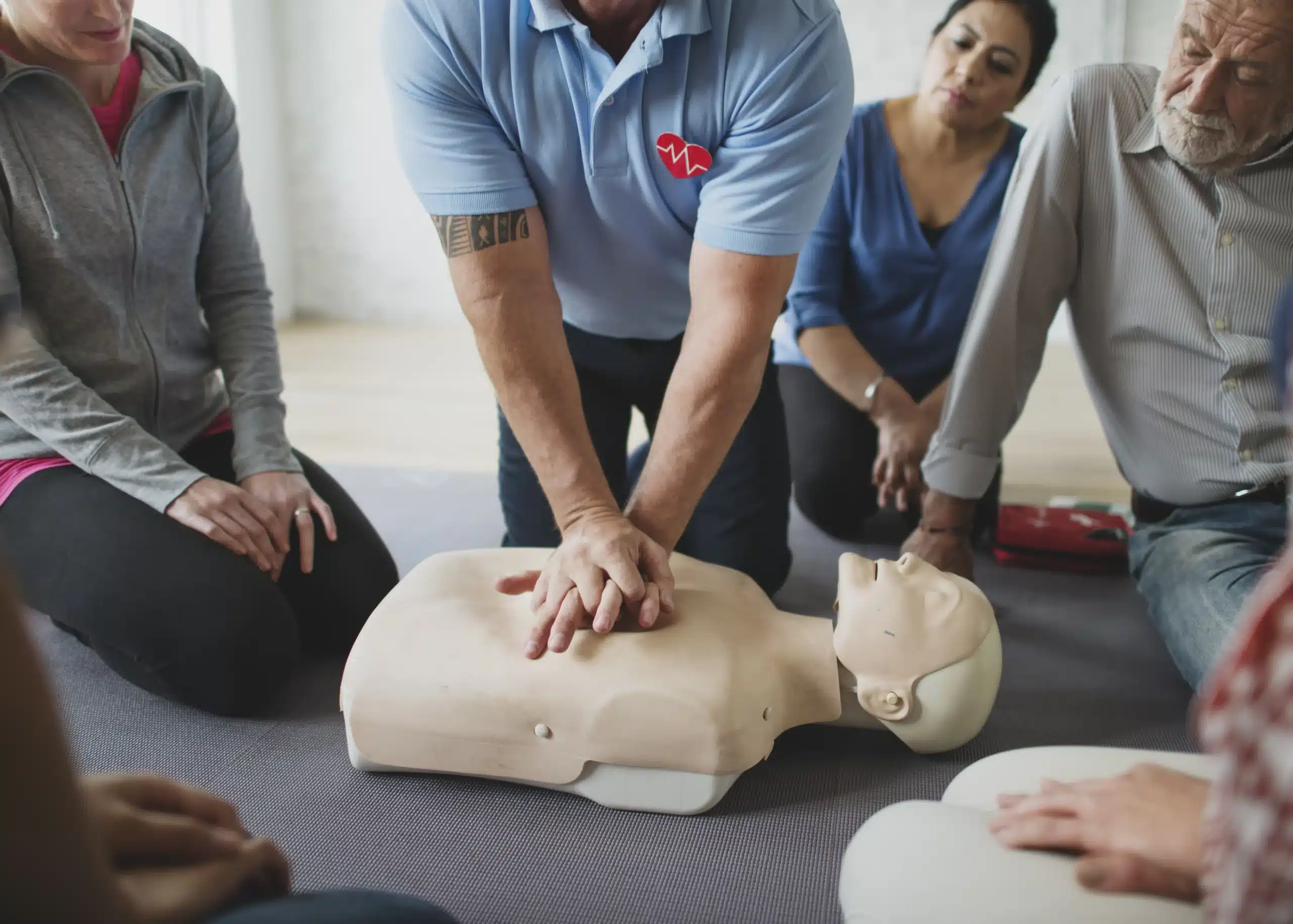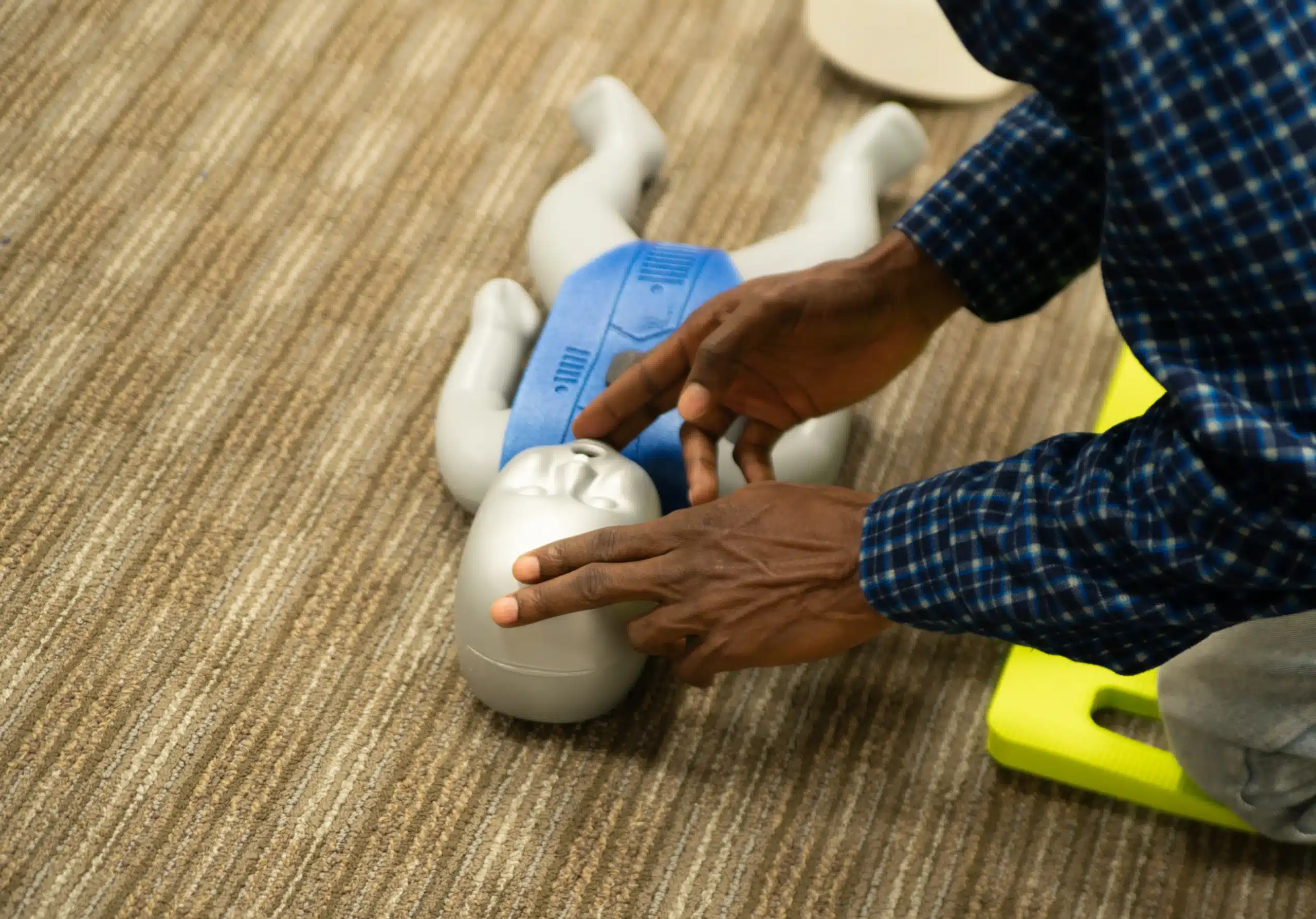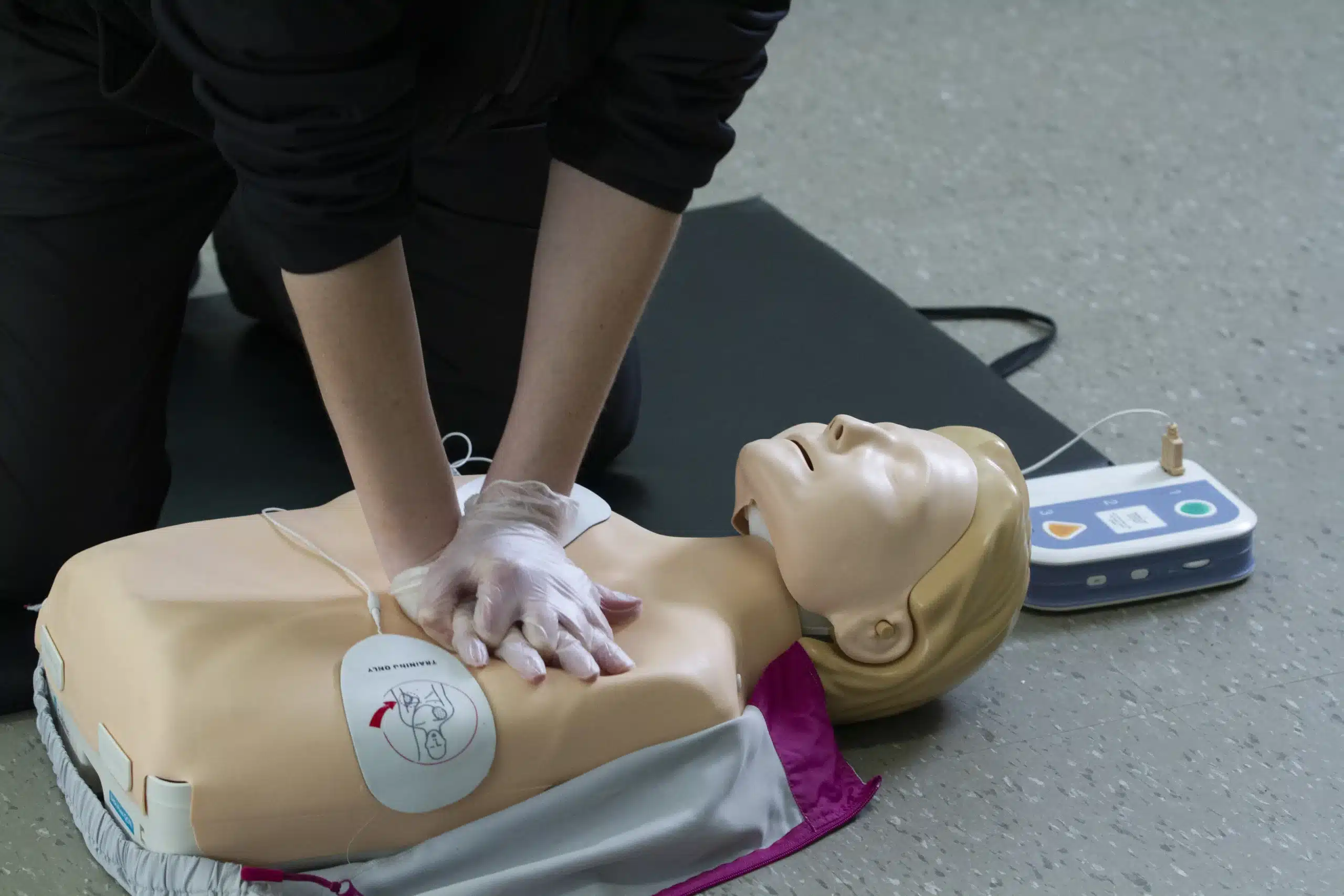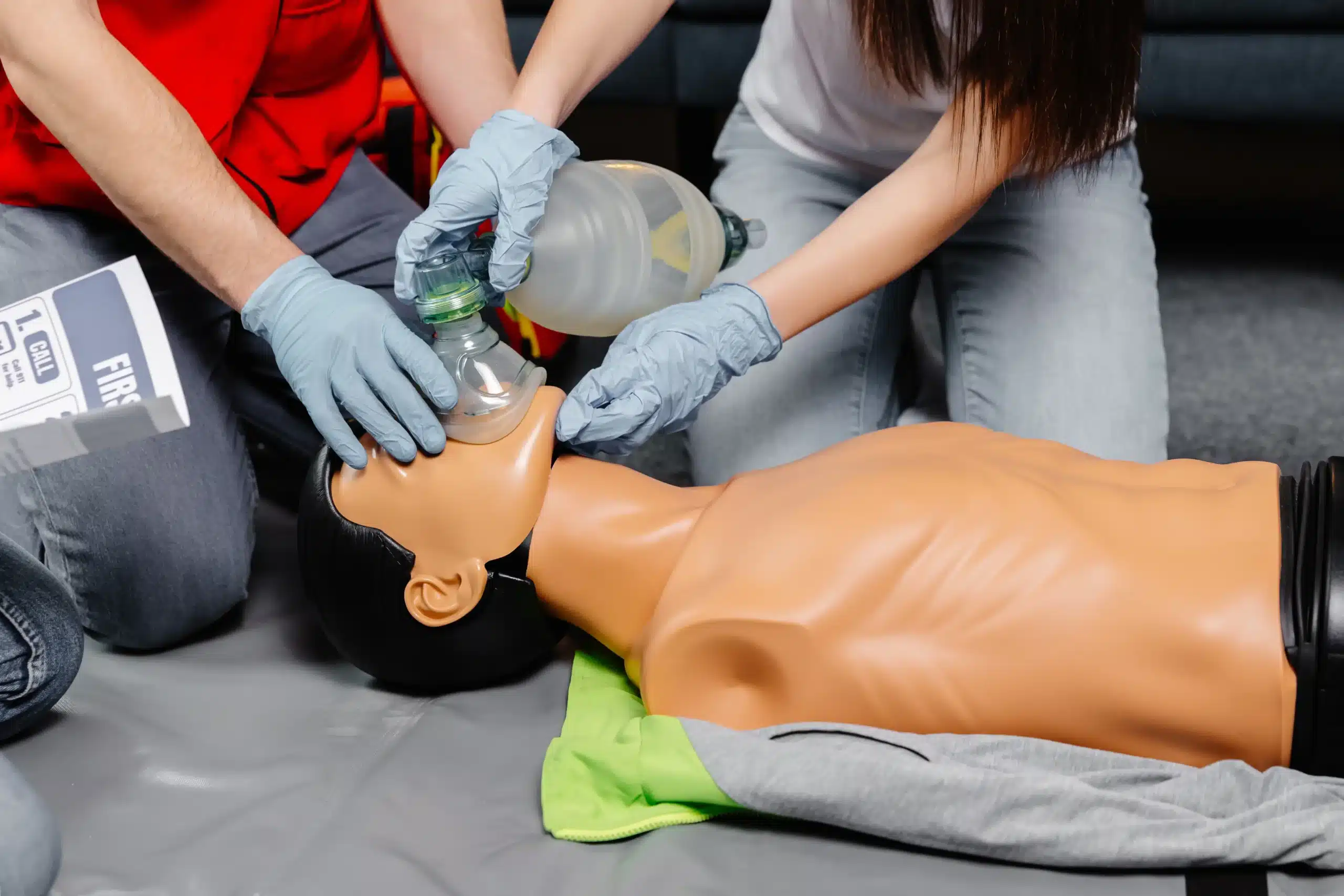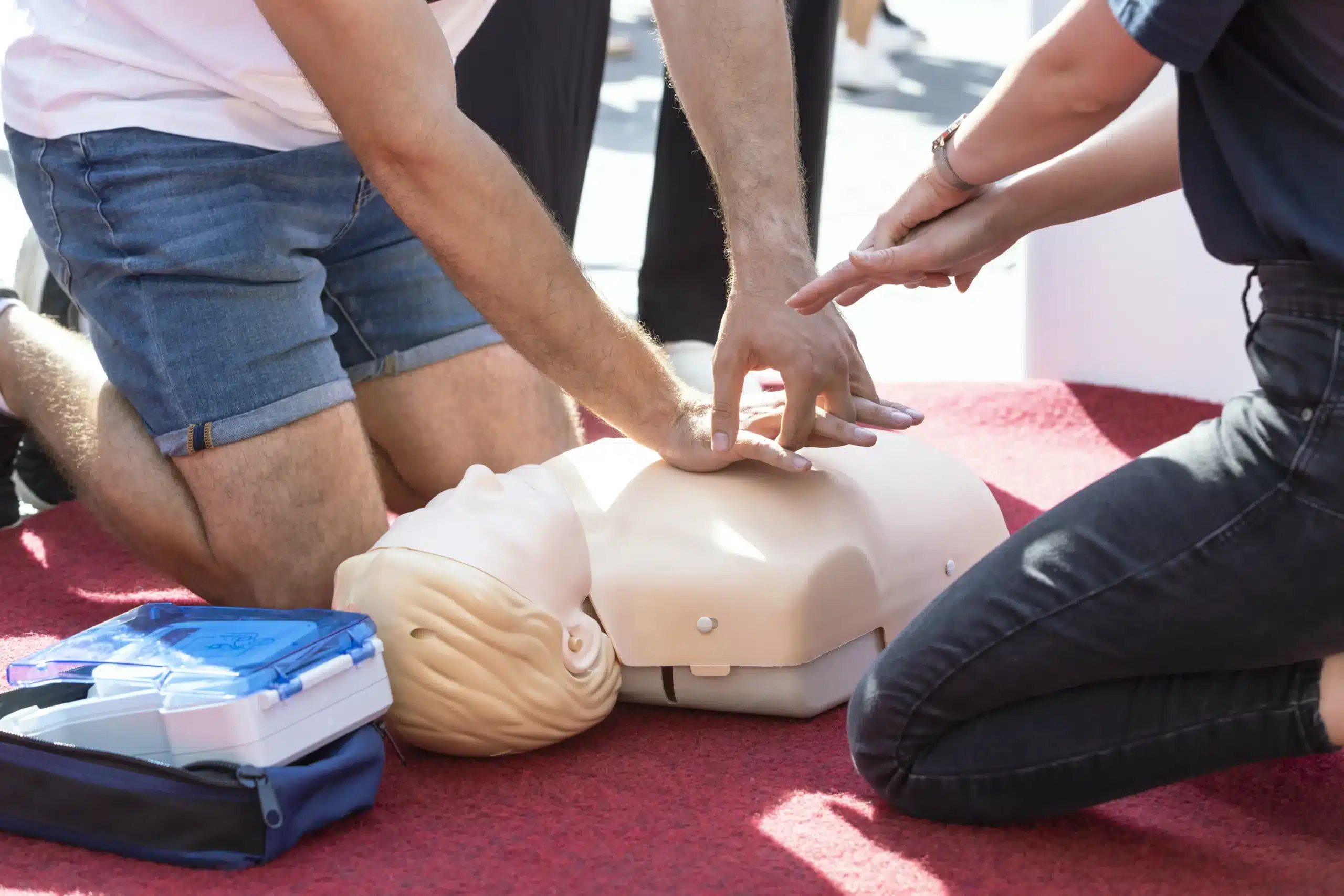Life has a way of throwing curveballs when we least expect them. A sudden injury, a medical emergency—these situations can be unsettling, especially if you don’t know how to respond. That’s where first-aid training comes in. It empowers you to confidently handle emergencies, providing immediate care until professional help arrives. Whether you’re a parent, a teacher, a healthcare worker, or simply someone who wants to be prepared, first-aid classes near me can equip you with essential, potentially life-saving skills. This article explores the world of first aid, from understanding different class types and certifications to finding reputable providers and preparing for your training. Let’s dive in and discover how first-aid training can benefit you and your community.
Key Takeaways
- First-aid training equips you for real-life emergencies: Learning practical skills like CPR, wound care, and how to respond to medical crises gives you the confidence to act when it matters most. Explore different course formats to find the best fit for your schedule and learning style.
- Finding the right course involves research: Look for reputable providers with certified instructors, comprehensive curriculums, and hands-on practice components. Consider your specific needs and choose a course that aligns with your personal or professional goals.
- First-aid certification offers lasting value: It enhances your personal preparedness, can open up career opportunities, and makes you a valuable asset to your community. Investing in these skills is an investment in yourself and the well-being of those around you.
What are First-Aid Classes?
First-aid classes teach you practical skills to handle medical emergencies. These courses cover a range of topics, from CPR and wound care to how to respond to various medical emergencies, like choking or bleeding. They empower you to confidently give immediate assistance when it’s needed most. Basic first-aid training offers practical skills applicable in various settings—at work, at home, or even out in public. Learning first aid can make a real difference in critical situations, potentially saving lives and minimizing injuries. It’s about being prepared and knowing how to act quickly and effectively when every second counts.
Explore First-Aid Class Types
Knowing what kind of first-aid training you need is the first step. Let’s break down some common first-aid class types so you can find the right fit.
Basic First Aid
Basic first-aid training equips you with practical skills to handle common injuries like cuts, burns, sprains, and choking. It’s helpful for various situations, whether at home, in the workplace, or out and about. These courses cover essential techniques, emphasizing quick thinking and effective responses in everyday emergencies.
CPR and AED Training
CPR and AED training goes hand-in-hand with first aid, teaching you how to respond to life-threatening situations like cardiac arrest. You’ll learn CPR (cardiopulmonary resuscitation) techniques and how to use an AED (automated external defibrillator). This combined training can significantly increase the chances of survival for someone experiencing a cardiac emergency. Many providers offer combined CPR/First Aid/AED certification courses.
Specialized First-Aid Courses
Beyond basic first aid and CPR/AED training, you can find specialized courses tailored to specific needs:
Pediatric First Aid
If you work with children, pediatric first-aid training is essential. These courses cover age-specific first-aid techniques and emergency responses for infants and children. They often meet licensing requirements for childcare providers and educators. Look for certifications aligned with state-specific guidelines, like those from the EMSA in California.
Workplace Safety Training
Some workplaces require specialized first-aid training to address industry-specific hazards. Investing in workplace safety training ensures employees can handle emergencies unique to their environment, minimizing risks and promoting a safer work environment.
Advanced Life Support
Advanced life support (ALS) training is for healthcare professionals and builds upon basic life support skills. These certifications cover advanced medical procedures and are typically required for paramedics, nurses, and other medical personnel. ALS courses often include certifications like ACLS (Advanced Cardiovascular Life Support) and PALS (Pediatric Advanced Life Support).
Find Reputable First-Aid Classes Near You
Finding the right first-aid class is like finding the right pair of shoes—it needs to fit your needs and feel comfortable. Here’s how to find a reputable provider and the perfect class for you.
Search Online
Start your search online. Use specific keywords like “first aid certification near me” or “CPR classes in [your city]” to narrow down your options. Reading online reviews can give you a sense of other students’ experiences. Choosing the right provider is crucial for accurate and effective training, so take your time with this step. A good training provider will offer clear information about their courses, including the curriculum, certification, and instructor qualifications. CPR Certification Now offers some helpful tips for selecting a quality provider.
Check Local Resources
Reach out to your local community centers, hospitals, or fire departments. They often offer first-aid and CPR classes or can connect you with reputable providers in your area. For instance, Campbell CPR Classes offers a range of AHA-certified courses at competitive prices. Checking local resources can help you find convenient and affordable options close to home.
Assess Provider Reputation
Once you have a few potential providers in mind, do some digging. Look for providers who employ certified instructors with experience in emergency response. A provider’s reputation speaks volumes about the quality of training they offer. Consider factors like the comprehensiveness of the curriculum, the emphasis on hands-on practice, and the overall learning environment. A solid training program will equip you with the confidence and skills to handle real-life emergencies. For example, Campbell CPR Classes offers a low price guarantee, demonstrating their commitment to providing accessible training. If you have any questions, don’t hesitate to contact them directly. A reputable provider will be happy to answer your questions and address any concerns.
Choose the Right First-Aid Class Format
Once you’ve found a few reputable providers, it’s time to pick a class format. Each learning style has its own pros and cons, so consider what works best for your schedule, budget, and learning preferences.
In-Person Classes
In-person classes provide hands-on training with a certified instructor. This format is ideal if you learn best in a traditional classroom setting and value face-to-face interaction. You’ll have the opportunity to ask questions, practice skills with guidance, and receive immediate feedback. In-person training often meets workplace requirements, like those from OSHA, and certifications are typically valid for two years. If you prefer a structured learning environment and thrive on personal instruction, in-person first-aid classes might be the right choice.
Online Courses
Online first-aid courses offer convenience and flexibility. You can learn at your own pace, accessing course materials from your laptop or tablet whenever it’s convenient. This format often works well for busy individuals or those who prefer self-directed learning. However, online courses typically don’t include hands-on skill demonstrations, which are crucial for developing practical first-aid skills. While online courses can provide a foundation of knowledge, they may not fully prepare you for real-life emergencies. Make sure you have the right equipment; you’ll need a computer or tablet for most online courses.
Blended Learning
Blended learning combines the best of both worlds. You’ll complete online coursework at your own pace, then attend an in-person skills session to practice techniques and receive feedback from an instructor. This format offers flexibility while ensuring you gain the practical experience necessary to respond effectively in emergencies. The AHA’s RQI program is a great example of blended learning, offering a convenient way for healthcare professionals to renew their certifications. If you appreciate the convenience of online learning but also recognize the importance of hands-on practice, blended learning could be a perfect solution.
Consider First-Aid Training Costs
Before signing up for a first-aid class, it’s helpful to understand the associated costs. Knowing average prices, exploring potential discounts, and investigating financial assistance options can help you budget effectively.
Average Prices
First-aid training costs vary based on the certification level and course content. Basic first-aid and CPR certification typically costs between $50 and $150. More advanced certifications, like those including AED training or wilderness first aid, can cost $200 or more. Combined CPR and first-aid courses often range from $75 to $200, usually including certification fees. CPR1 provides a helpful overview of CPR class costs and types to give you a better understanding of current pricing.
Discounts and Group Rates
If you’re looking to save money, look for providers that offer discounts. Many training centers provide reduced rates for group bookings, a great option for businesses, community organizations, or families. Campbell CPR Classes offers group discounts, plus a low-price guarantee to ensure you receive excellent value.
Financial Assistance
For those facing financial constraints, resources may be available to help cover training costs. Some community programs or local organizations offer financial aid or subsidized training. Exploring these options can make essential life-saving skills more accessible. You can also research CPR class costs to find a program that fits your budget.
Understand Certifications
Before signing up for a first-aid class, take a moment to understand what certifications are available and how they can benefit you. Knowing the different types of certifications, their validity periods, and potential career advantages can help you make informed decisions.
Types of Certifications
First-aid certifications vary based on the skills taught and the target audience. Common certifications include Basic First Aid, CPR/AED, and specialized courses like wilderness first aid or pediatric first aid. Campbell CPR Classes offers a range of American Heart Association certifications, including BLS, ACLS, and PALS. Understanding these distinctions will help you choose the right course. For example, healthcare providers often pursue BLS or ACLS certification, while childcare providers might opt for pediatric first aid.
Validity and Renewal
Certifications typically expire, usually after two years. This ensures that certified individuals stay up-to-date with the latest guidelines. Renewal often involves a refresher course. Check the typical cost of these courses to help you budget and maintain your qualifications. Plan ahead for renewals to ensure your skills remain current and you meet any workplace requirements. Knowing the renewal process ahead of time simplifies maintaining your certification.
Employment Opportunities
First-aid and CPR certifications can broaden your employment opportunities. While essential for healthcare professionals, these certifications are valuable across many fields. Employers often prefer candidates with these skills. Having these certifications demonstrates your preparedness and commitment to safety, making you a more competitive applicant. Even if not explicitly required, these certifications can enhance your resume.
Know What to Expect in Class
Walking into a first-aid class for the first time can feel a little like the first day of school. Knowing what to expect can help you feel prepared and ready to learn these lifesaving skills. Here’s a glimpse into a typical first-aid class:
Course Content
First-aid courses cover essential skills to help in various medical emergencies. You’ll learn how to recognize and respond to everything from minor cuts and burns to more serious situations like choking or a heart attack. Most classes include adult, child, and infant CPR, how to use an automated external defibrillator (AED), and basic first-aid techniques like wound care and splinting. Before registering, check the course description to ensure it covers the specific skills you’re interested in learning. Combined CPR and first aid certification courses usually cost between $75 and $200, often including the certification fee. For specific pricing and course details, visit our CPR and First Aid Certification page.
Hands-On Practice
First-aid training isn’t just about lectures and textbooks. A significant portion of the class involves hands-on practice to build your muscle memory and confidence. Expect to participate in interactive scenarios, practicing chest compressions, rescue breaths, and proper AED use on mannequins. You’ll learn how to assess a situation, make quick decisions, and provide appropriate care for both adults and children. This hands-on training is crucial for preparing you to handle real-life emergencies effectively. We encourage you to contact us with any questions about the hands-on components of our courses.
Assessments
To ensure you’ve grasped the material, most first-aid courses include assessments. These typically involve a written exam and a practical skills test where you demonstrate the techniques you’ve learned. Successfully completing these assessments earns you a certification, often valid for two years. This certification is widely recognized by employers, including schools and hospitals, and demonstrates your competence in responding to emergencies. It’s a valuable credential to have, both personally and professionally. Learn more about our certification process.
Prepare for Your First-Aid Class
Getting ready for your first-aid class involves a little prep work. It’s not about studying for a final exam; it’s about setting yourself up for a positive learning experience.
Gather Materials
Most first-aid courses provide the essential materials, but it’s always a good idea to review the course content beforehand. This helps you know what to expect and avoid surprises. For example, some courses, like those at Campbell CPR Classes, offer a free keychain CPR training mask on the day of the class. Bringing a notebook and pen might also be helpful for jotting down key points or questions.
Study Tips
First-aid training is hands-on, so there’s no need to cram. The best way to prepare is to come with an open mind and a willingness to learn. Many people have misconceptions about first aid. A good course will dispel these myths while providing practical training. Focus on absorbing the information and actively participating in the hands-on exercises. This will give you the confidence and skills to handle real-life emergencies.
Find First-Aid Class Providers in Campbell, CA
If you’re looking for first-aid training in Campbell, CA, several reputable providers offer comprehensive courses. Here are a few options:
Campbell CPR Classes
Campbell CPR Classes offers a variety of American Heart Association (AHA) certified courses, including BLS, ACLS, PALS, CPR, and First Aid. They offer flexible schedules and competitive pricing, making them a convenient choice. For more information, explore their course offerings. They also offer discounted group rates and a low price guarantee.
American Red Cross
The American Red Cross offers a range of first-aid courses designed for various needs, from basic first aid to workplace safety training. Their focus on practical skills and real-world scenarios helps participants gain confidence in responding to emergencies.
American Heart Association
The AHA sets the standards for CPR and first-aid education. Many organizations, including Campbell CPR Classes, are certified AHA Training Centers and offer courses that align with these guidelines. This ensures high-quality training and nationally recognized certification.
National Safety Council
The National Safety Council provides first-aid training courses, including workplace safety and emergency response. Their emphasis on practical skills and injury prevention equips participants to handle various emergency situations.
Discover the Benefits of First-Aid Training
Knowing what to do in a medical emergency can make all the difference. First-aid training equips you with the skills and confidence to respond effectively, benefiting you, your workplace, and your community.
Personal Preparedness
First-aid training empowers you to handle medical emergencies involving loved ones or even strangers. From minor injuries like cuts and burns to more serious incidents, your skills can help stabilize a situation until professional help arrives. Being prepared can significantly impact the outcome, giving you the confidence to act quickly when every second counts. These skills can truly make a life-or-death difference. For more information on the importance of first aid and CPR, check out this article debunking common misconceptions about CPR and first aid.
Professional Development
First-aid training can be a valuable asset in your career. Many workplaces, especially those in healthcare, education, and childcare, require or prefer employees with first-aid certifications. Having these skills can increase your job prospects and open doors to new opportunities. It demonstrates a commitment to safety and preparedness, qualities highly valued by employers. Being proactive in learning first aid enhances your employability and shows your readiness to handle emergencies in various professional settings.
Community Impact
First-aid training has a ripple effect throughout your community. By being trained, you become a valuable resource for others in times of need. Effective first aid can minimize the severity of injuries and illnesses, potentially reducing the need for extensive medical treatment. Dispelling common myths about first aid through training creates a more prepared and resilient community, better equipped to handle emergencies. Learn more about common first aid myths and why training is so important.
Related Articles
- CPR Certification in San Jose: Your Complete Guide – Campbell CPR Classes
- Pediatric CPR & First Aid Classes in San Jose – Campbell CPR Classes
- The Lifesaving Power of Workplace CPR and First-Aid Training
- BLS Training Near Me: A Practical Guide – Campbell CPR Classes
- ACLS Renewal Campbell: Your Complete Guide – Campbell CPR Classes
Frequently Asked Questions
What’s the difference between basic first aid and CPR?
Basic first aid focuses on treating common injuries like cuts, burns, sprains, and fractures. CPR, or Cardiopulmonary Resuscitation, specifically addresses life-threatening cardiac emergencies where someone’s heart has stopped beating. While distinct, these skills often complement each other in emergency situations.
How do I choose the right first-aid class?
Consider your specific needs and interests. If you work with children, pediatric first aid is essential. If you’re an outdoor enthusiast, wilderness first aid might be a good fit. For most people, a basic first-aid and CPR/AED combination course provides a solid foundation. Also, think about your learning style. Do you prefer in-person instruction or the flexibility of online learning? Choosing a reputable provider, like Campbell CPR Classes, ensures high-quality training and recognized certification.
How much does first-aid training cost?
Costs vary depending on the course type and provider. Basic first aid and CPR certification typically ranges from $50 to $150. More specialized courses, like wilderness first aid or advanced life support, can be more expensive. Look for providers offering discounts, like group rates or special promotions, to help manage costs. Campbell CPR Classes offers a low-price guarantee, ensuring you receive excellent value for your investment.
How long are first-aid certifications valid?
Most first-aid and CPR certifications are valid for two years. Renewal usually involves a refresher course to ensure your skills and knowledge remain current. Check with your certifying organization or training provider for specific renewal requirements. Staying up-to-date with the latest guidelines is crucial for providing effective care in emergencies.
Why should I get first-aid certified?
First-aid training provides valuable skills that can make a real difference in emergency situations. It empowers you to help family, friends, coworkers, or even strangers in need. Beyond personal preparedness, these certifications can enhance your career prospects, as many employers prefer or require first-aid trained personnel. It’s an investment in yourself, your workplace, and your community.


